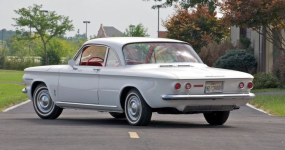Bring back the old VW bug and bus.
One person could change an engine, did that a number of times. Easy to rebuild an engine. Fuel efficient. Easy to tune up.
You could, but nobody would buy one. "Easy to rebuild an engine" is just not a good sales pitch in the 21st century.
The gasoline engine that puffs away under the hood of a modern car is a 19th century technology that reached it's peak in the late 1940s. The biggest obstacle in the early 20th century was a workable and reliable ignition system. The insulating materials of the day were not adequate. Around 1915, the first mechanical switch and capacitor (points and condenser) ignition system was patented and it became the industry standard for 60 years. It worked, but required regular maintenance or the car wouldn't start. In 1975, transistor ignitions systems appeared. The "tune up" was an anachronism. The only part of the ignition system subject to regular wear is the spark plugs, and those are now changed at 100,000 miles, if ever.
Since then, the gasoline engine relied on electronic digital controls to squeeze out the last few drops of power and efficiency. What began with a very crude method to meter fuel to the engine, based on engine speed and temperature, has become a control system which can detect a change in engine speed over an arc of rotation less than three degrees. That's important information, if you want to get if you want to get 1970 horsepower levels out of an engine that's one third 1970 engine displacement.
All of this was in response to laws requiring less pollution, not a demand for smaller more powerful engines. Along with that came USB ports on the console and bluetooth speakers. This has resulted in thousands, if not millions of very small single purpose electronic modules and any car may have a dozen or more. When you press the button for the passenger side door window, you are actually sending a request to a module in the door, which will operate the window motor for you. That module will likely not fit more than a few other models of car. Enough are made for production, with a small overrun for service parts inventory. When they are gone, there are no more.
The future of owner repair is not so much about the right to repair, it's actually the possibility of repair. I remember in 2011, a five year old Cadillac required a $3000 repair to make the headlamps work. The labor on that bill was $98. In 2021, it might not be possible to repair a 2007 Coupe at any price. In the future, salvage yards will be filled with car which have perfectly good engines and transmissions. The cars were considered a total loss because the windows wouldn't roll up.

